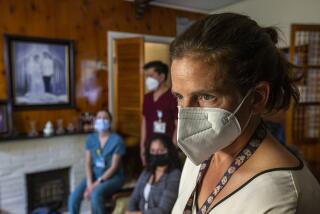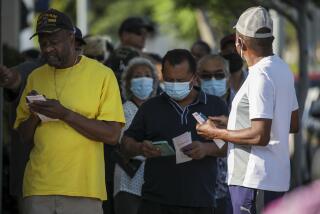Nearly a third of California counties have contained coronavirus enough to allow more reopenings

SACRAMENTO â Nearly a third of Californiaâs 58 counties have certified to the state that they have contained the spread of COVID-19, which allows them to reopen restaurants to dine-in service, as well as shopping malls and other businesses, Gov. Gavin Newsom said Thursday.
The 19 counties that have attested to meeting state standards for containment are mostly in rural areas of Northern California with small populations. They represent about 4.5% of the stateâs population and do not include urban centers such as Los Angeles and San Francisco that remain largely on lockdown.
âAs of today, the attestations are up and those counties -- 19 now -- are moving deeper into the second phase of reopening large sectors of their economy,â Newsom said during a news conference where he announced a revised state budget in response to the pandemic.
The state is continuing talks with other counties that are trying to meet state standards for testing, hospital availability and numbers of cases.
âWe are doing what we can to move forward as we committed in that space,â Newsom said.
The state is starting to cautiously lift restrictions put in place to stem the spread of the coronavirus.
The result has been a pandemic patchwork. Some businesses have been allowed to open while others remain shuttered. A few areas are requiring masks to be worn any time residents leave their homes. More than a dozen counties are moving toward something resembling normality, while others are firmly standing by stay-at-home orders and other coronavirus restrictions.
Before businesses can reopen, a county must complete a risk assessment and develop protection plans that include training employees in how to limit the spread of the virus, providing screenings of workers and establishing disinfection protocols and physical distancing guidelines.
Some urban counties harder hit by the coronavirus said reopenings will be slower than in rural counties.
More to Read
Sign up for Essential California
The most important California stories and recommendations in your inbox every morning.
You may occasionally receive promotional content from the Los Angeles Times.











